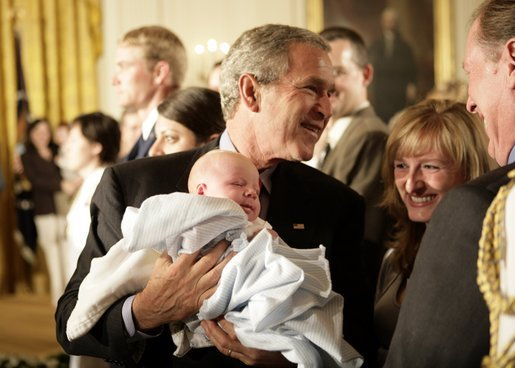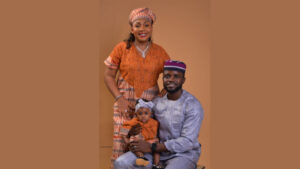
EDITORS’ NOTE: This is the first story in a three-part series on couples who have given birth through embryo adoption. To read the other stories in the series click here and here. An overview story about embryo adoption is available here.
HOUSTON, Texas (BP)–J.J. and Tracy Jones vividly remember the tears, the anguish and the heartache of infertility. With each month there was new hope. And, with each month, disappointment.
It was, they say now, an emotional ride.
The Houston couple tried for eight months to conceive before finally visiting a fertility doctor, who told them that J.J. had a condition that could deter conception. Still, the doctor said, the couple should be able to get pregnant. With good news in hand, they tried several rounds of artificial insemination. They tried different fertility drugs. Nothing, though, worked. At one point, they took an eight-month hiatus from fertility treatments to get away from the stress.
“Even when we took a break from the treatment, I still kind of held out hope that we could get pregnant on our own,” Tracy, now 34, told Baptist Press. “So, each month was a roller coaster — every time I found out that we weren’t pregnant again.”
Members of Champion Forest Baptist Church in Houston, the Joneses — like most couples — wanted biological children. Tracy also had a strong desire to experience pregnancy. Each new treatment at the fertility clinic provided renewed optimism.
“[But] then you find out that it didn’t work, and then there’s that disappointment and grief,” Tracy said. “With each cycle, it was very disappointing.”
They tried three years to conceive, with no success. All along, they talked about adoption as an option. During their fertility treatments, two people — a friend and a cousin — had told Tracy about a non-traditional adoptive service, the Snowflakes Embryo Adoption Program (www.Snowflakes.org), in which couples adopt surplus frozen embryos left over from in vitro fertilization. Although there is no guarantee of pregnancy — the embryos might not implant in the womb — it nevertheless provides infertile couples with the opportunity to experience pregnancy, and it gives the embryos themselves a chance at life in the world. There are an estimated 400,000 frozen embryos being stored in fertility clinics nationwide.
In addition to Snowflakes, other embryo adoption services include the National Embryo Donation Center (www.EmbryoDonation.org) in Tennessee and Embryos Alive (www.EmbryosAlive.com) in Ohio.
“God had already prepared our hearts to be ready for adoption in a traditional sense, and that was already the path that we were starting to think about and go down,” J.J. said. “Embryo adoption was just thrown in front of us. Since we already had our hearts set towards adoption, it was almost like adoption with a bonus — that we could be both adoptive parents and birth parents.”
Launched in 1997 in California, the Snowflakes program is similar to traditional adoption in that it involves a home study. It is different in that embryo adoption typically costs less than traditional adoption.
Although some embryo adoption services arrange closed adoptions, all of Snowflakes’ adoptions are open. During a Snowflakes adoption, each family — the genetic family and the adopting family — view blind bios until they see one they like. When there is a match, the agency arranges the adoption.
Generally, genetic families place their embryos up for adoption after they feel that their family is complete.
“We decided that we didn’t really need the biological connection to feel like parents or to feel like the child is ours,” Tracy said.
The Joneses adopted 10 embryos, all of which were shipped to their fertility clinic. Seven, though, did not survive the thawing process at the clinic, leaving only three to be transferred into the womb. Thankfully, one embryo implanted.
Finally, after four long and often grueling years, J.J. and Tracy were pregnant.
“It was an amazing day,” Tracy said of the day she discovered they had succeeded. “I took a pregnancy test before the actual blood test, and the only reason I did that was because I was so certain I wasn’t pregnant. I was feeling no pregnancy symptoms. I was crying and saying, ‘Why doesn’t God want this for us?’ So I took the pregnancy test just to confirm that I was not pregnant so that I could move on emotionally and get over it. [But] the pink [positive] line came up and I couldn’t believe my eyes. I thought it was a faulty plus, but I kept hearing that there’s no such thing as a false positive.
“We were just beside ourselves. It was about midnight, and we went to the store and went and got ice cream. We couldn’t believe it. It didn’t sink in until the 20-week ultrasound — that there was a baby with fingers and toes in there. It was really amazing.”
Their son, Jack Lewis Jones III, was born April 25, 2005, weighing eight pounds, three ounces. One month later, he would meet the president of the United States.
Jack Jones III, known as “Trey,” was born in the summer of ’05 as Congress debated a bill that would liberalize the Bush policy on embryonic stem cell research. That policy, adopted in 2001, prevents taxpayer money from being used for the destruction of embryos — which is necessary for embryonic stem cell research — while the bill before Congress would allow it. The Bush policy does not ban privately funded research.
Seeking to put a face on the stem cell policy and to encourage embryo adoption, the Bush administration invited Snowflake families — the Joneses were one of them — to the East Room of the White House in May 2005. Bush gave a speech and then met some of the families.
“He happened to mention in his speech that 81 children had been born through embryo adoption,” J.J. said. “As he was exiting the press conference, Tracy’s mother pushed Tracy out in the aisle and said, ‘President Bush, here’s No. 81.’ Trey happened to be the youngest at that time.”
Bush held Trey for a moment and kissed his head.
“I had my camera, [but] I didn’t get a good picture at all,” J.J. said. “But I didn’t even notice that The New York Times was there and AP was there.”
The next day, a picture of Bush and little Trey Jones was on the front pages of newspapers nationwide.
The Joneses have a unique view on the entire stem cell debate. They oppose embryonic stem cell research but support stem cell research using non-embryonic sources, such as umbilical cord blood, placentas, fat and bone marrow (often called adult stem research).
“So much of the polling done is, ‘Are you for or against embryonic stem cell research?’ We have talked to many people, as a result of being thrust into this position of advocacy, who don’t even know that that means the embryos have to be destroyed,” J.J. said. “The argument [for embryonic stem cell research] begins with, ‘These embryos are going to be destroyed anyway.’ You can’t take that position without saying that the 60,000 conservatively plus children that would be born if given a chance are somehow not of enough value to allow them to be born.”
Said Tracy, “There currently is no evidence that embryonic stem cell research will do anything. They’ve had zero cases of positive results.”
The Joneses also are passionate about embryo adoption. It gave them an opportunity to experience pregnancy and gave Trey Jones a chance at birth. They have a close relationship with the genetic parents, David and Heather Wright, and the two families even have vacationed together. Their first face-to-face meeting took place on camera, when CBS’ “The Early Show” arranged for the two families to meet when Trey was an infant.
“Our genetic family tells us that this has been a great solution to them,” J.J. said, “and it’s obviously been an unbelievable solution from our side.”
–30–
















